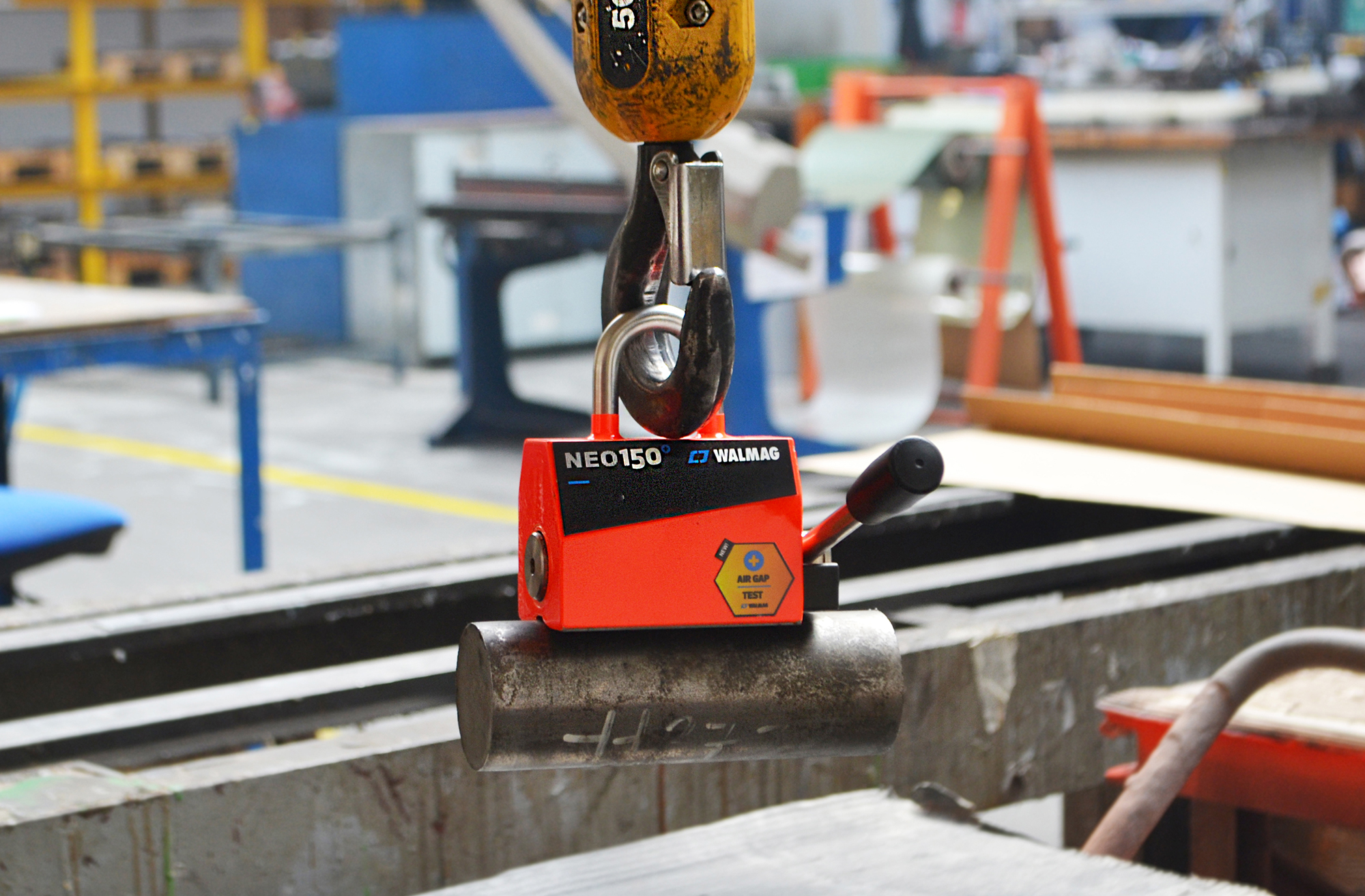
Different types of magnet for different purposes:
This lifting magnet is perfect for handling smaller
workpieces manually
Clamping or lifting magnets should not be an impulse purchase. Mistakes made due to a hasty choice can result in having to replace the acquired magnet or in not being able to use the magnet to its full potential. This could cost you time and money. Here are the most common mistakes that we see in practice—learn from others!
1. The customer does not assess all potential uses of a magnet
Typical example of this mistake: You buy a lifting magnet for handling thin metal sheets but only after having it installed, you realize you need to lift steel pipes with it, too. Most likely, the magnetic force of your new magnet will not suffice. Any respectable seller will discuss your needs first and then give you expert advice on which magnet would be the best fit. However, it’s you in the first place who should have a clear idea on how you’re going to utilise the magnet.
Think first and think ahead! What will you use the magnet for—not just right now, in the near future as well. Consider especially:
- types of materials that you’re going to lift or chuck with a magnet
- size and weight of workpieces that are going to be clamped or chucked
- surface of the workpieces (whether they’re dented or have a small contact area).
2. The customer expects a universal solution
As mentioned in the previous paragraph, there’s no universal lifting magnet or magnetic chuck. This often comes as a surprise to customers who expect to lift anything with just one magnetic lifter, from robust workpieces to large thin metal sheets.
Should you need to handle both heavy and small loads, we recommend purchasing two magnets for these two types of loads that are so vastly different. Similarly, machining broad workpieces or smaller ones each needs a different clamping solution.

Even when the contact layer of a lifting magnet is designed
to fit round workpieces, its magnetic force is slightly weaker
(compared to lifting flat metal sheets).
3. The customer uses electromagnetic clamping for dry grinding
Due to the merciless laws of physics, an electromagnet will overheat when used for dry grinding. That can cause slight deformation of the workpiece, especially when clamped/chucked for a longer period of time. Never use electromagnets for dry grinding without a cooling agent, especially not when precision is your main goal.
A stable solution for clamping a workpiece during dry grinding would be an electropermanent magnet (EP) that doesn’t overheat. However, its clamping force decreases when clamping a workpiece with a low-quality surface (creating air capsules) which may cause a less stable fixation of heavier or multiple workpieces.
4. The customer does not asses ideal conditions of a magnet’s maximal capacity
When a magnet’s specification states that it lifts up to 500 kg, it doesn’t mean it does so under any circumstances. Dimensions matter, too—there’s a vast difference between lifting a 50 mm thick or a 5 mm thin metal sheet.
Always consider deflection and the consequential risk of peeling when lifting large and thin loads. For example, large metal sheets (6 x 3 m) will always deflect slightly, even when lifted by multiple lifting magnets (attached in more places). Similarly, a magnet will not lift 500 kg of stacked thin metal sheets, 500 kg of molded steel or 500 kg of pipes—air capsules decrease the magnetic force in this situation.
The nominal weight of load that a magnet can lift should always be determined on a case-by-case basis. We highly recommend consulting the manufacturer or an expertised seller—they will give you the best instructions on how to use your magnetic clamps or chucks. Or, you can borrow a magnetic tool at first and try it out.
5. The customer’s only criterium is the price
It’s never a good idea to choose a magnetic lifter or a chuck just based on the price. We’ve seen a case in which the customer had gotten a battery powered magnet to lift steel pipes but due to air capsules in the pipes, the magnet could not magnetize the pipes and therefore was useless. The customer should have gotten a more powerful electromagnet with a magnetic field deeper than 40 mm—sadly, they didn’t buy it because it was more expensive.
We understand you most likely operate with a budget for getting a magnetic tool. Consult a professional! A serious seller or manufacturer will always do their best to stick to your budget as well as to find the best magnetic tool for your purposes. If they can’t succeed, they’ll be more than happy to suggest available alternatives.
We have the same goal as you here in Walmag—we don’t want you to make mistakes when choosing a magnetic tool. We’ll consult, we’ll advise, we’ll choose the best magnet for you, with you. Let us know!